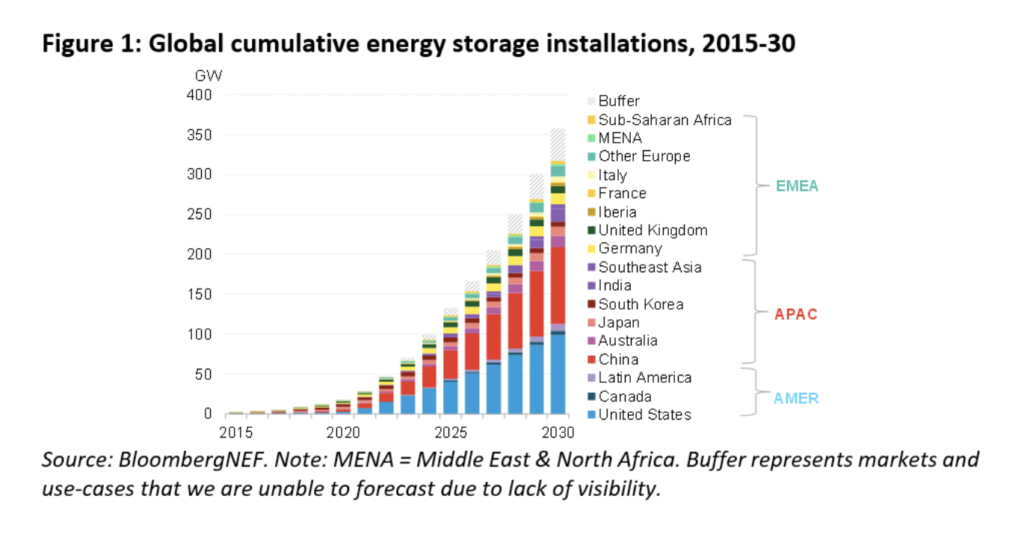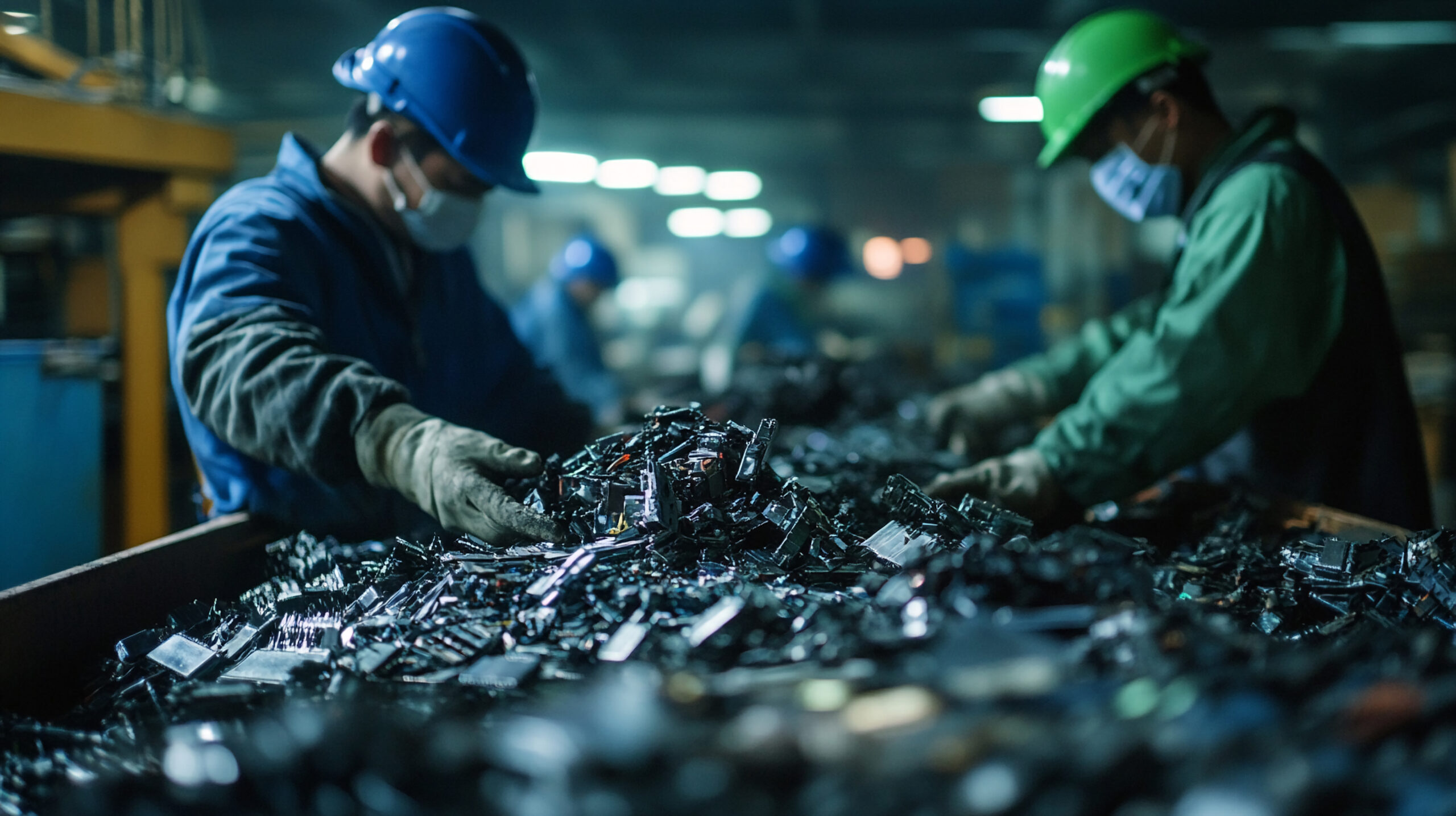As the global shift toward renewable energy accelerates, the need for effective energy storage is increasingly critical. Energy storage is a critical enabler for power grids to achieve higher levels of intermittent renewables, like wind and solar. By capturing and storing excess energy during peak production times, storage systems can release power when demand surges or supply drops, helping to ensure a more consistent and stable energy flow. This capability makes energy storage a vital enabler for a sustainable, low-carbon future, where clean energy can meet the demands of modern economies around the clock.
In addition to supporting grid stability, energy storage is transforming other sectors, such as electric mobility. The rapid growth of electric vehicles (EVs) relies on advancements in battery technology, which helps reduce greenhouse gas emissions by displacing fossil fuel-powered engines. As innovations in storage technology evolve, they promise to boost the capacity, efficiency, and lifespan of both grid-scale storage and EV batteries, further accelerating the transition to renewables.
- The key to reliable energy
- Innovation in battery storage technology
- Advancements in non-battery energy storage
- Mining the critical minerals essential for energy storage
The key to reliable energy
Renewable energy sources like wind and solar are inherently variable, meaning they don’t produce energy on demand. Wind turbines generate power only when the wind blows and solar panels rely on sunlight. This intermittency creates challenges in matching energy supply to demand. Energy storage technologies can help to bridge this gap.
Global investments in energy storage are accelerating. According to BloombergNEF, global energy storage installations are projected to reach a cumulative 411 gigawatts (or 1,194 gigawatt-hours) by 2030, a 20-fold increase from 2021. As these systems are integrated into grids, they are proving to be invaluable in balancing renewable energy fluctuations, preventing blackouts, and providing backup power in emergencies.

Innovation in battery storage technology
While lithium-ion batteries have been the dominant battery storage technology, new innovations are emerging. Advanced charging and long-duration energy storage system technologies such as solid-state batteries and flow batteries are showing promise in overcoming the limitations of the current battery technology.
Solid-state batteries are seen as the next frontier in energy storage, offering higher energy density, faster charging, and improved safety compared to conventional lithium-ion batteries. The solid electrolyte used in these batteries eliminates the risk of leakage and allows for greater compactness, potentially revolutionizing energy storage for both grid and vehicle applications. Another innovation, flow batteries, are gaining attention for their ability to store energy for extended periods, making them ideal for balancing seasonal variations in renewable energy. Unlike lithium-ion batteries, which store energy in solid electrodes, flow batteries store energy in liquid electrolytes that circulate between tanks. This design allows them to hold energy for longer durations and scale up storage capacity by simply expanding the tanks. Companies like VRB Energy are continuously improving the technology and offer vanadium redox flow batteries that can be discharged over an almost unlimited number of charge and discharge cycles without degradation. Unlike conventional batteries, these systems maintain their performance over a 20-year lifespan, providing long-term energy storage without the typical wear and capacity loss seen in other batteries.
Advancements in non-battery energy storage
Batteries have long been a cornerstone of energy storage systems, offering flexibility, portability, and rapid response times. However, they are not without limitations, particularly when it comes to scalability, lifespan, and environmental impact. Non-battery storage systems, such as pumped hydro energy storage (PHES), gravity-based storage, and compressed air energy storage (CAES), provide innovative alternatives that address some of these challenges, especially for grid-scale applications.
PHES is the most mature and widely deployed form of large-scale energy storage, providing about 95% of the world’s storage capacity. It works by pumping water from a lower reservoir to an upper reservoir during times of excess electricity generation. When demand peaks, the stored water is released back down, spinning turbines to generate electricity. The technology is being advanced by companies like Voith Hydro and GE Renewable Energy through innovations that use closed-loop and modular systems to expand feasibility beyond traditional locations. Gravity-based storage, pioneered by companies like Green Gravity and Energy Vault, uses surplus electricity to lift heavy weights when surplus energy is available. When energy is needed, the weights are released and their downward motion drives a generator to produce electricity, offering sustainable and durable energy storage with minimal degradation over time. CAES, championed by firms like Hydrostor, compress air into underground caverns or tanks and release it to generate electricity, with modern designs incorporating advanced thermal management to improve efficiency and eliminate reliance on fossil fuels. Together, these technologies provide vital alternatives to batteries, addressing large-scale, long-duration energy storage needs critical for stabilizing renewable energy grids.
Mining critical minerals essential for energy storage
As the demand for energy storage grows, both for grid stability and EVs, the mining industry is playing a crucial role in supplying the critical minerals required for battery production. Lithium, cobalt, nickel, and copper are foundational elements in these batteries, though their use varies depending on whether the battery is designed for grid storage or for EVs. While both types of batteries rely on similar materials, the composition and scale of mineral use differ based on their specific applications and performance requirements.
Grid storage batteries, which are primarily used to store renewable energy for later use, typically prioritize longevity, capacity, and cost-efficiency over energy density. These batteries are often larger, designed to hold energy for extended periods, and are housed in stationary locations. Many grid storage systems, such as lithium-iron phosphate/lithium-ferro phosphate (LFP) batteries, use less cobalt and nickel than EV batteries, as they don’t require the same high energy density. In contrast, EV batteries require high energy density to maximize driving range within a compact form, which makes nickel-cobalt-aluminum (NCA) or nickel-manganese-cobalt (NMC) batteries common choices.
Copper is a vital component in both grid and EV batteries, essential for electrical conductivity in battery cells, wiring, and energy transmission infrastructure. In EV batteries, copper is heavily used in the cells as anode current collectors and also the pack wiring to ensure efficient power flow, with an average EV containing up to 80 kilograms of copper, while grid storage batteries also rely on copper for interconnections and integration into larger grid systems.
The growing demand for these minerals highlights the importance of mining in the energy transition. Each type of battery system plays a unique role in supporting the shift to renewable energy, whether by stabilizing the grid or enabling widespread electric mobility. As energy storage technologies continue to evolve, the mining sector’s ability to supply these critical materials will remain essential, enabling advances in both grid-scale storage and EV applications that are central to a sustainable, low-carbon future.
- Explore the next article in our Energy Transition series: Electric Vehicles and the Future of Transportation
I-ROX is open to industry input, collaboration and support – both financially and technically. If you are interested in discussing pulsed-power technology, or any other element of collaboration, please contact us for more information.





